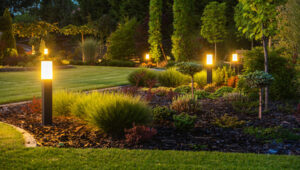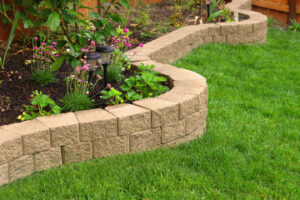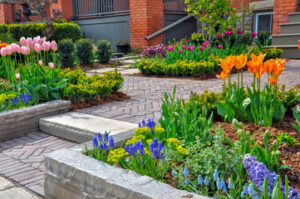It’s important to have regular landscape lighting maintenance performed. This includes cleaning and inspections of the fixtures to remove any obstructions that may be affecting illumination, replacing burned out bulbs, and checking the integrity of electrical connections.

Before any troubleshooting can take place, it is important to turn off the power and use insulated tools to prevent electric shock. Click Here to explore further details.
Landscape lighting is meant to illuminate the beauty of your home’s exterior in a way that highlights your landscaping without glare or overexposure. This is an effect that requires a lot of careful planning and installation. To do this right takes knowledge of everything from proper placement to choosing the right wattage for each fixture. Getting the right amount of light can mean the difference between a well-designed, functional lighting system and a series of broken fixtures that do little more than make your property look shabby.
Fortunately, most of the time when your lights break it’s a simple fix. Some problems, such as a light that won’t turn on, are caused by power outages or tripped circuit breakers. In other cases, the issue is with the electrical connections or the light itself. Usually, this means checking the bulbs and repairing any connections that may be loose. Occasionally, it’s necessary to reposition the light or add a hub system to improve the voltage over long wire runs.
It’s also important to inspect your fixtures regularly for signs of damage and wear. High quality, professional grade lighting is made to withstand the elements and will develop a natural patina over time. However, even these lights can be subject to physical wear and tear that can result in rust and other issues.
If a fixture appears shabby or has visible damage, it is probably time to replace it. It is possible that it can be repaired, but you will need the help of a trained professional.
Another sign that it’s time to replace a fixture is if it has a leak. This can be due to water or moisture that has gotten into the fixture or it could be the result of a bad design that does not allow for water to escape.
Finally, it’s important to check the ground stake that holds your light fixture in place. This can get damaged by sand or gravel. It’s also a good idea to take the fixture apart and clean any areas where you can see corrosion. You can use a contact cleaner and an emery board to remove any buildup.
Wiring
The wires that power the landscape lighting system function as a vital lifeline, delivering a safe voltage to each fixture. When the connections in these wires become loose, the system can no longer function as intended. Additionally, loose wires can generate heat that melts the connections and, in extreme cases, causes fires. In order to avoid these problems, all wire connections should be inspected on a regular basis, including a physical test. A landscape lighting specialist can make these inspections and tighten connections as needed to maintain the reliability of a landscape lighting system.
In the case of outdoor lighting fixtures, it’s often caused by corrosion that develops on the wire or bulb contacts due to constant exposure to the elements. This can be addressed by first turning off the power to the fixture and then using an emery board or sandpaper to remove any corrosion on the wire or bulb contacts before spraying them with contact cleaner.
Another common issue can be a result of improperly-sized wires. Even though copper wires are fantastic conductors, if the total wattage of your lights exceeds what your transformer can handle, the breaker will trip and the bulbs will not light.
A voltmeter can be used to determine whether your transformer is providing enough voltage for the entire lighting system, and if not, an electrician will need to visit the site and change the wattage of the transformer accordingly.
It is important to keep in mind that many of these issues can be prevented by implementing best maintenance practices and making sure that all components are UL listed for outdoor use. This includes choosing fixtures and components that can withstand water ingress, harsh weather conditions, and pests. A landscape lighting expert can also help with the design of a system that will provide maximum durability and security. This can include utilizing landscape wire protection and buried conduit, as well as installing repellent barriers or other pest deterrents to protect the wiring and components of a lighting system. By taking the time to perform routine maintenance and addressing potential issues quickly, you can enjoy the benefits of your landscape lighting system for a long time.
Sockets
In the world of landscape lighting, a good fixture is the heart of your system. It determines how well your yard is illuminated by delivering the right amount of power and creating a desirable light spread for your property. The type of bulb you use will also impact your system’s performance. For instance, halogen bulbs tend to burn out more regularly than LEDs. If you’re struggling to get your system to work properly, it may be a matter of finding the right type of bulb or making some simple fixes.
One of the most common issues homeowners encounter with their landscape lighting systems is when one or more lights go dark. Often times, this is a simple fix if you’ve tried replacing the light bulb. But if you’ve done this and your lights still don’t turn on, the problem could be with the socket.
The socket is where the bulb plugs in, and it’s subject to a lot of wear and tear from outdoor elements like dirt, water, and snow. This can corrode the socket and prevent proper contact between the bulb and circuit. If you’ve already replaced the light bulb and the problem persists, it might be time to consider a new fixture that uses solid state lamps instead of traditional halogen bulbs.
When you’re installing a landscape lighting system, be sure to use the proper tools. A good cable stripping tool will help you prepare wires for installation, and a wire nut or twist-on connector will ensure your connections are secure. It’s also a good idea to use a cable tie to bundle and organize your wires before burying them.
Remember to call 811 before digging, so your local utility company can mark the location of any underground lines you’ll be running through with your landscape lighting project. This will keep you from damaging important electrical lines, which can lead to costly repairs or even a dangerous situation. To ensure the safety of your family and neighbors, always hire a licensed professional to install or troubleshoot your landscape lighting system.
Bulbs
Landscape lighting adds so much value to your property. However, like any other home system, it requires some maintenance to keep it in top shape. Some landscape lighting repair projects can be done by yourself, but for more complicated issues, it’s usually best to contact a professional.
Whether your landscape lights are low voltage or high voltage, the most common problem is burned-out bulbs. This occurs due to overuse or simply age, depending on your specific lighting system. When a bulb burns out, it’s important to replace it with the same type and wattage of bulb. Otherwise, you could cause a voltage overload in the transformer, which will burn out other bulbs.
It’s also a good idea to choose LED bulbs, which are extremely durable and can withstand Michigan’s harsh weather conditions. Plus, they are energy efficient, so you’ll save money on your electricity bills.
Aside from burned-out bulbs, other problems with your fixtures may include rusted sockets or corroded ground stakes. These are signs of poor quality fixtures that cannot withstand the elements and moisture. A quality fixture made of copper or brass should never develop rust or corrosion.
Another potential problem with your landscape lights is shorts within the direct burial wire. This happens when the currents passing through these wires arc, which can damage and even short-circuit the fixtures.
If you suspect a short in your landscape lighting system, you should immediately turn off the power to the circuit and use a voltmeter to check the voltage level of each light. If the voltmeter shows no voltage, it’s likely that there is a short somewhere in the system. Keeping your landscape lighting system up to date and looking its best is the only way to get the most out of it. For the most basic landscape lighting repair, you should check your fixtures regularly for signs of damage and trim your trees and shrubs to prevent them from overgrowing and blocking the lights or causing damaging voltage spikes. If you want your outdoor lighting to look its absolute best, you should plan on replacing a few bulbs proactively.

